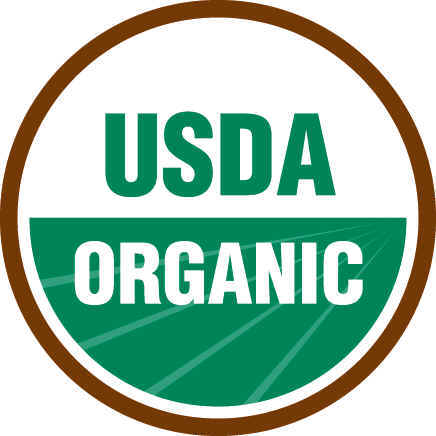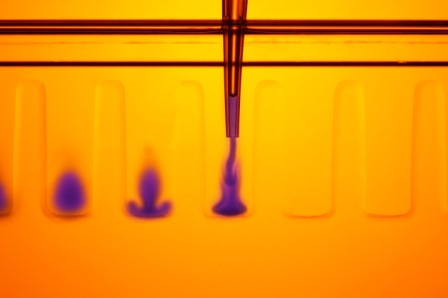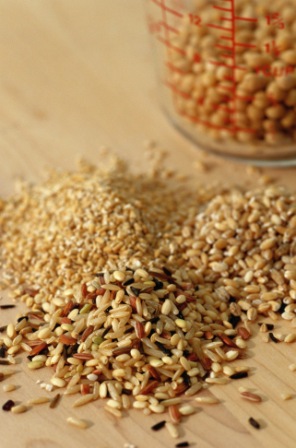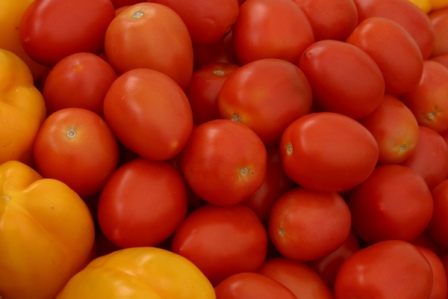Vitamer's GMO Standard
Vitamer is committed to providing the best quality ingredients and manufacturing processes for your brand of dietary supplements, and providing full disclosure and transparency in our ingredient sources. We strive to use IPP non-GMO ingredients whenever possible, and have data on file to support our ingredients’ non-GMO status. We have reviewed our entire line, based on ingredients, and classify them based on GMO risk. This information is accessible to our customers at all times.
What Are GMOs?
GMOs, or genetically modified organisms, are organisms whose genetic material has been artificially manipulated in a laboratory through genetic engineering. This creates a combination of plants, animals, bacteria and genes that do not occur naturally. The term “Non-GMO” is not defined at present, although the FDA has issued a position paper, and is expected to make a ruling within the next 2 years.
GMO means that DNA has been modified ---> DNA is found in the middle (nucleus) of cells -->If a product doesn’t have cells, then it would NOT have any DNA, so it would NOT test positive for GMO.
There are 8 crops that are genetically modified and in commercial use: These 8 crops get processed into a huge variety of ingredients
|
Alfalfa |
Soy- Roughly 94% of soy is genetically modified |
|
Canola- Roughly 90% of canola is genetically modified
|
Sugar beet- Roughly 95% of sugar beets are genetically modified |
|
Corn- Roughly 88% of corn is genetically modified |
Zucchini |
|
Papaya- Roughly 75% of papaya is genetically modified
|
Yellow summer squash
|
Genetic Modification - GMO
A number of our customers are concerned about the genetic modification (GM) status of dietary supplement ingredients. Here is information on Vitamer’s product line regarding the labeling and marketing of products that do not contain Genetically Modified Organisms (GMOs).
Regarding supplement ingredients, many of our suppliers feel confident to say their ingredients are non-GMO even though they don’t have documentation to support it. In these cases, there may not be any plant material contained in the ingredient or product that can be genetically modified to begin with.
An example is our Borage Oil. Our supplier feels, and we agree, it is non-GMO because there are no GM Borage plants developed to date.
Other suppliers provide statements that say, “(xxx) ingredient is not manufactured from GM ingredients and thus is not subject to labeling under Regulations 1829/2003/EC and 1830/2003/EC (European regulations)” or “the product is produced by chemical synthesis without the involvement of genetic engineering and is therefore GMO free.”
Others simply check a box saying the ingredient is “non-GMO” but do not have further documentation. One example is our vegetarian capsules made from cellulose from Pine trees that are not genetically modified in the first place. Another is our vitamin B6 which is synthetically manufactured using certain chemicals (no plant origin), thus they could not have introduced GM material during their manufacturing process.
Ideally, all of our suppliers would be able to state that:
a) The ingredient does not contain ingredients derived from GMOs
(with documentation)
b) Does not contain any GMOs, and
c) It has been tested free of GMOs
However it is not always possible to get that information from suppliers as it is not required by law.
Truly Non-GMO
We also encourage you to direct your customers to our Certified Organic products,
By definition organic products cannot contain GMOs.
Thus, organic products are another way to choose non-GMO products.
High, Medium, Low, and None GMO Risk
Because GMO testing presents several unique challenges and is often not accurate, we have evaluated our dietary supplements based on RISK of GMO content:
High, Medium, Low, and None
A HIGH RISK product contains an ingredient that consists of or is derived from a source that is typically genetically modified.
Example – even though ascorbic acid (vitamin C) would not test positive for any GMO material, we know that it ultimately comes from corn, and that nearly all corn is GMO.
Therefore any product with Vitamin C we classify as a HIGH RISK product.
The same for Vitamin E, which comes from soy.
We would not use “non-GMO” language related to any high risk product.
High-Risk Crops (in commercial production)
- Alfalfa (first planting 2011 – mass contamination)
- Canola (> 90% of U.S. crop)
- Corn (approx. 90% of U.S. crop
- Cotton (approx. 90% of U.S. )
- Papaya (most of Hawaiian crop)
- Soy (> 94% of U.S. crop)
- Sugar Beets (> 95% of U.S. crop )
- Zucchini / Squash (approx. 30,000 acres)
- ALL animal & insect products & derivatives(milk, meat, eggs, honey, pollen, hair/fur, cartilage, etc.) mainly due to possible contamination in feed, but even cloning status must be proven , and that documentation does not exist
A MEDIUM RISK product contains a small amount of a potentially (but not likely) GMO component. come from monitored Crops. These ingredients have incidents of contamination have occurred, and those crops which have genetically modified relatives in production with which cross-pollination is possible.
Example – softgel capsules are a small part of the product, but contain gelatin (animal hide)- Did the animal have GMO feed? Was there interaction with cloned animals? There is risk, but not high risk. It is not likely there will be sufficient documentation on softgel capsules to truly verify them as non-GMO.
Medium Risk Ingredients
- Beta vulgaris (e.g., chard, table beets)
- Brassica napa (e.g., rutabaga, Siberian kale)
- Brassica rapa (e.g., bok choy, mizuna, Chinese cabbage, turnip, rapini, tatsoi)

- Curcubita (acorn squash, delicata squash, patty pan)
- Flax
- Rice
LOW RISK materials mean there are no commercially available GMO equivalents.
This is what most companies call “Non-GMO”
There is almost always some risk that there was interaction with a GMO, but it is very unlikely.
Example – there are no GMO strawberries. But the strawberry field could be next to a corn or soy field, resulting in a risk of GMO interaction.
Low Risk Crops
Tomatoes: In 1994, genetically modified Flavr Savr tomatoes became the 
first commercially produced GMOs. Removed in 1997, due to problems with flavor
and ability to hold up in shipping.
There are no genetically engineered tomatoes in commercial production
Potatoes: Genetically modified NewLeaf potatoes were introduced by Monsanto in 1996.
Fast-food chains and chip makers rejected it the product was never successful and
was discontinued in the spring of 2001.
There are no genetically engineered potatoes in commercial production.
Wheat: There is not currently, nor has there ever been, any genetically engineered wheat on the market. Of all “low-risk” crops, this is the one most commonly (and incorrectly) assumed to be GMO. It is a key commodity crop, industry is pushing hard to bring GMO varieties to market, with a small amount recently appearing in the Northwest.
Salmon: AquaBounty is currently petitioning the FDA to approve its genetically engineered variety of salmon
Pigs: A genetically engineered (Enviropig) was developed in 1995, government approval sought in 2009. In June 2012 all the enviropigs were euthanized.
A NO RISK ingredient means it is organic or we have substantial documentation (IPP certification) that traces the source back to the seed.
By definition Organic means it cannot be GMO, even though there still is a low risk of interaction.
Right now, GMO is out there – and the United States government considers it “safe”
- 15 years of GM planting
- 17 million farmers
- 400 million acres
- 29 countries
- six continents
The simple truth is that the majority of food consumed each day is GMO.
MORE INFORMATION ON GMO:
Genetic modification of plants is a process that involves the deliberate insertion of genes from bacteria, animals or other organisms into the DNA of plants. These manipulations would never occur in nature. The purpose is to increase yield of successful crops, delay fruit ripening, resist insect/virus/ herbicides, alter oil content, and/or to control pollen. GM occurs primarily in the U.S and Canada — many European countries are very opposed to GM.
There are 12 genetically engineered plant species that have been approved for commercial production in the US. GM started in 1994, when the first genetically engineered plants were grown for commercial use in the US under USDA supervision. In 2008, the second billionth acre of GM crops was planted globally. From 1996-2010, soy, corn, cotton and canola were the most common crops
The majority of Americans consume foods on a daily basis that contain genetic modification in bread, cereal, pasta, pizza, vegetables and fortified foods. The US does not require labeling of GM food; however the European Union (EU), Australia, Japan, and South Korea require GMO disclosure labeling.
A 2011 MSNBC poll found that 96.1% of 45,729 people who responded to a poll would like Genetically Modified Organism ingredients to appear on product labels. Another poll jointly conducted by CBS and the New York Times in 2008 revealed that 53% of Americans say they will not buy food that has been genetically modified.
The main reasons why people are opposed to GM can be boiled down to three issues:
1. Health. Those opposed to GM say GM may produce new allergens or toxins in food; it may lower the nutritional value of the food; and/or it may enhance antibiotic resistance.
2. Environmental. Those opposed to GM say GM seeds can contaminate organic crops and may have an impact on plants, animals and insects.
3. Social. Many feel consumers should have an informed choice when purchasing GM foods, which requires labeling.
This is also troublesome for organic producers since organic standards do not require or encourage the use of testing for GMO contamination — yet small farmers are getting sued by large corporations as “organic” implies non-GMO status.
The journal Science noted that research on human health and GM is lacking. Research related to health effects has been conducted using insects and animals only .Millions of people worldwide have consumed GM foods for over 15 years, with no reports of negative health effects, and according to the U.S National Academies of Sciences, “no adverse health effects attributed to genetic engineering have been documented in the human population.” In 2009, a review in Nutrition Reviews found that while most studies concluded that GM foods did not differ in nutrition or cause any detectable toxic effects in animals, some research found adverse changes at a cellular level caused by some GM foods. Certainly, more research is needed to make a better safety assessment. Interestingly, research is underway to see if GM can remove allergenic properties of foods, thus making common food allergies a thing of the past.
The Identity Preservation Program, or IPP, ensures that throughout the course of production, from seed handling to final processing, no genetically modified ingredients are utilized within the manufacturing system and the final processed material or product is tested for indicators of genetic modification.
However, there are drawbacks to the non-GMO monitoring system. It isn’t perfect. For some foods, no test exists to distinguish GMO from non-GMO and inadvertent (or deliberate) contamination may go undetected. We also rely on farmers, who do their best in a world now prevalent with GMOs, to supply the food chain with IPP select product and some testing methods require samples to be sent to a laboratory, not always a practical option for farmers waiting to move perishable produce.
Many products already make non-GMO claims on their packaging, but there is neither consistency in the labeling nor assurance that the products have actually been tested.
We aim to use non-GMO materials whenever possible and strive to offer certified Identity Preserved (IP) non-GMO products. We do not make a non-GMO claim without verification and supporting documentation. Unless the consumer requests actual verification from the manufacturer of each ingredient in the product they purchase, it is difficult to ascertain the accuracy of the non-GMO status and they must rely on us. We seek out non-GMO ingredients whenever possible even though the cost of these ingredients is significantly higher than that of their conventional counterparts.
We make every attempt to assure that the raw materials (RM) we receive are non-GMO by requesting this information from our suppliers and we keep this information on file. We feel that our customers expect the highest standards and thus we do not label our products as “non-GMO” unless they are truly non-GMO and we can support that statement .In cases where customers request information on ingredients contained in these products, we will disclose any information from our ingredient suppliers regarding their non-GMO claims.
Corn and soy are two of the top crops at risk for being undetected GMOs and they are also two foods that are the starting source for many of our dietary supplements. Corn is used to make vitamin C (ascorbic acid) in our vitamin C products, multivitamins and so on. Soy is used to make vitamin E and lecithin in our vitamin E products, multivitamins and food supplements .Both the corn soy that our vitamin C and E are isolated from, respectively, are not non-GMO. Many U.S .dietary supplement manufacturers and food companies that fortify foods routinely use these same suppliers for vitamin C and E.
The Non-GMO Project is a non-profit collaboration of manufacturers, retailers, processors, distributors, farmers, seed breeders and consumers. It began as a campaign in 2003 by The Natural Grocer Company in Berkeley, CA and turned into the “Non-GMO Project” in 2005. It represents the organic and natural products industry in the U.S .and Canada, and offers consumers “a consistent non-GMO choice for organic and natural products that are produced without genetic engineering or recombinant DNA technologies.”
In the fall of 2009, they launched a Non-GMO Project logo that participating retailers and manufacturers can use for marketing purposes. The logo can be used for those companies who take part in the program, which requires traceability and segregation practices plus testing at any point in the production chain, but they do not require testing (to contain no more than 0.9% GMO) of every single finished product .The new labeling campaign does not guarantee that foods are entirely free of GMOs, but that manufacturers have followed procedures, including testing, to ensure that crucial ingredients contain no more than 0.9% of GM material.
According to their website:
“It is not a guarantee that the product is 100% GMO free. The reason for this is that our program is process-based, using a set of best practices to avoid contamination... So in short, what our seal means is that a product has been produced according to rigorous best practices for GMO avoidance, including testing of risk ingredients.”